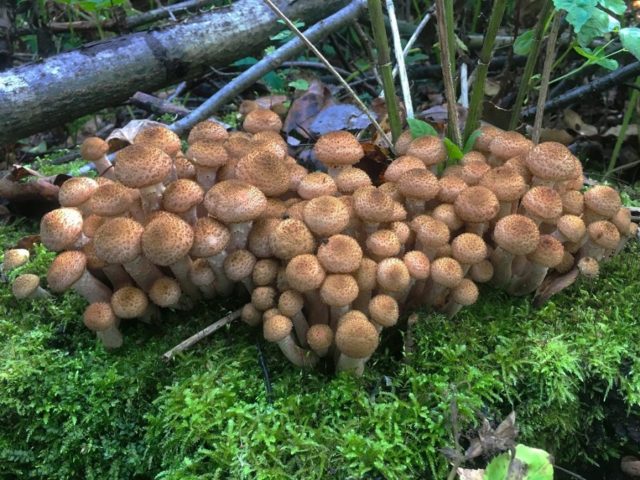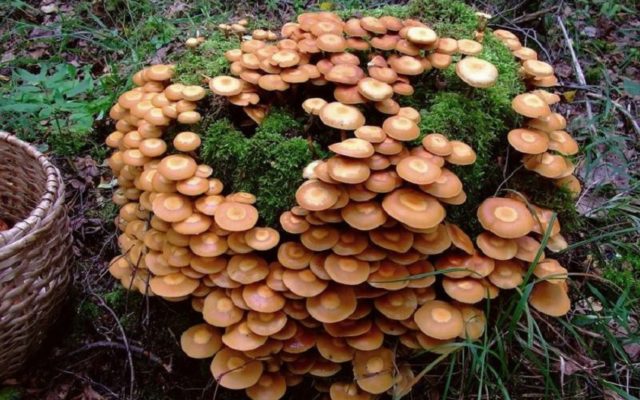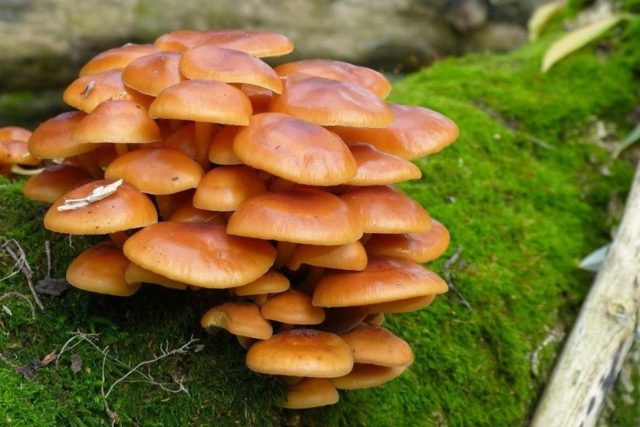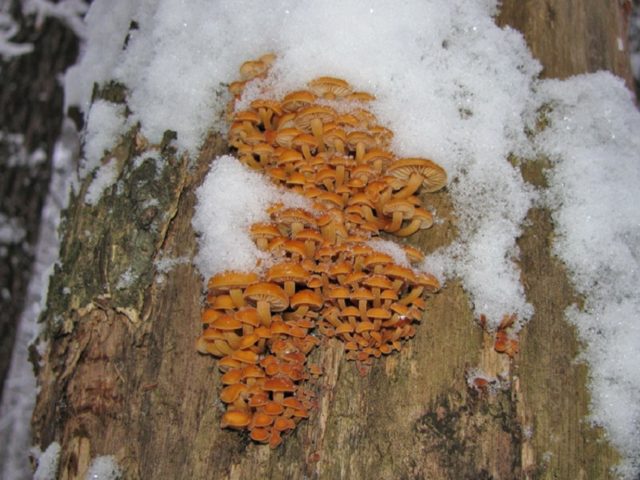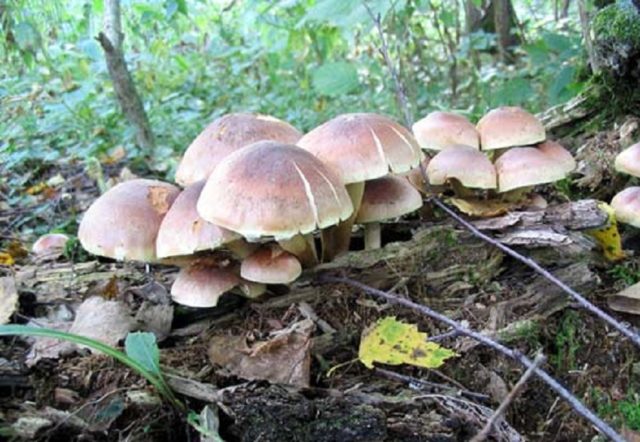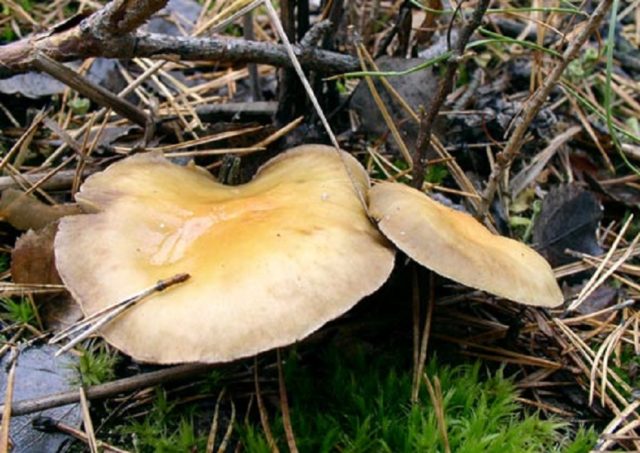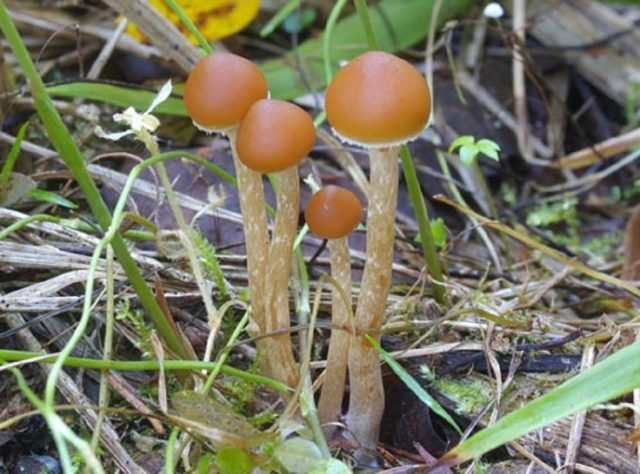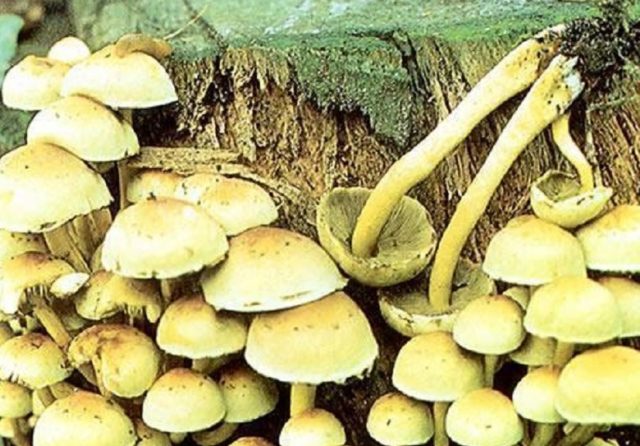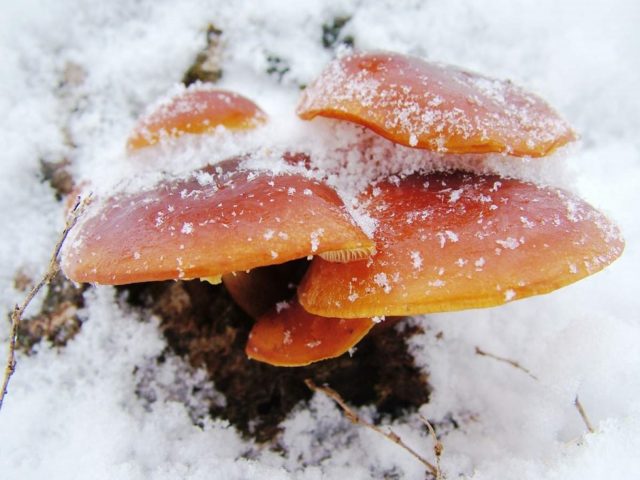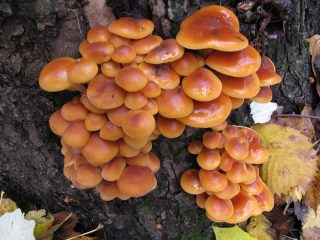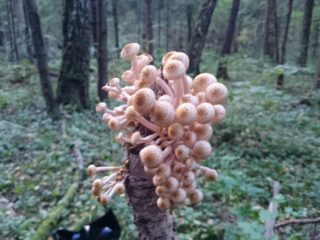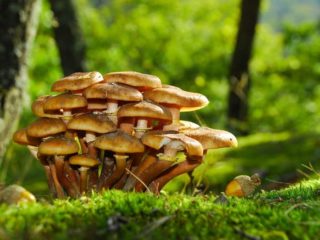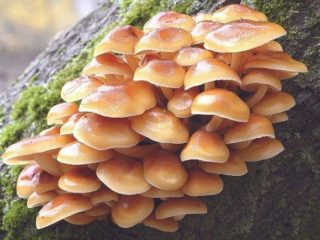Content
Honey mushrooms in the Kuban are a very common type of mushroom. They grow almost throughout the territory, bear fruit until the very frost. Depending on the species, mushroom pickers feast on them from April to early March. In order not to collect false varieties, you must first familiarize yourself with the useful information. Especially for beginners.
Types of edible honey agarics in the Kuban
Kuban is rich in mushroom catch. There are a lot of honey mushrooms among the varieties. They differ in the harvest season, appearance, and places of growth. Kuban mushrooms can be divided into several categories:
- Summer. The Latin name is Kuehneromycesmutabilis. In the scientific community, they are classified as Agaricomycetes. At the beginning they have a convex cap, which then becomes flat with a characteristic tubercle in the middle. In the rain it takes on a brown tint and is well translucent. When it gets dry, the surface of the cap is lighter and more matte. The edges are framed with distinct grooves, sometimes concentric rings protrude. They are edible.
- Autumn. The Latin name is Armillariamellea. The second name is real or ordinary. Mycologists attribute the species to parasitic fungi, but autumn mushrooms in the Kuban are very tasty. Therefore, mushroom pickers do not remember such a classification. Grows on tree trunks in large colonies. Solitary specimens are almost never found. The pulp is dense with a persistent mushroom smell. The hat is flat, 5 cm in diameter and with uneven edges. The leg is darker than the cap, the general background is brown.
- Winter or in the Latin alphabet Flammulinavelutipes. Kuban is rich in winter species that mushroom pickers collect throughout February. The taste and smell of winter mushrooms depends on where they grow. Mushrooms growing on deciduous trees have a more delicate taste and aroma. Coniferous vegetation imparts a slightly bitter resinous aftertaste and a corresponding odor. They tolerate frost perfectly, at this time they simply stop growth.
Most of all, winter mushrooms are preferred for settlement by poplar or maple.
What honey mushrooms look like in the Kuban
The species belongs in the scientific literature to the Ryadovkovy family. They are small in size with an orange or ocher color. In the Kuban, honey agarics can be distinguished from other mushrooms quite easily by their characteristic external signs:
- the diameter of the cap in southern latitudes reaches 3-17 cm;
- the color in the center of the mushroom cap is darker;
- the skin of the cap has shades from honey to olive;
- the surface is scaly or rough;
- the species has rare plates;
- in old specimens, the flesh coarsens;
- the legs at the base expand and become darker;
- there is a ring on the leg that resembles a skirt;
- the length of the leg in honey agarics in the Kuban reaches 8-10 cm.
External and taste differences are due to the place where the fruit bodies grow. It is necessary to carefully study the signs of edible species so that unusable specimens do not fall into the basket.
- brick red (Hypholomalateritium);
- poppy (Hypholomacapnoides);
- gallery bordered (Galerinamarginata);
- sulfur yellow (Hypholomafasciculare).
This is due to the fact that old mushrooms also often do not have a ring, like poisonous ones.
A little about the varieties of honey agarics:
Where honey mushrooms grow in the Kuban
It is important to know the growing places for all mushroom pickers of the Kuban. This will help to go for mushrooms in the fall of 2021 in the right direction, when honey mushrooms in the Kuban begin to bear fruit.The main area of distribution is considered to be the foothill and mountainous territories of the Kuban - the vicinity of Laba, Kamyshanovaya Polyana, Arkhyz. Most honey agarics are found in forest glades, where there are fallen tree trunks or stumps. Autumn views can be found in pine forests. In any case, they prefer moist, soggy plantings.
The most mushroom places in the Kuban, where you should go for mushrooms:
- Summer and autumn ones grow in the Arkhyz area (Goryachy Klyuch), between Krasnaya Polyana and Lake Kardyvach.
- The Seversky District, Krymsky, Apsheronsky, Belorechensky, and the outskirts of Barabinsk are considered to be harvestable.
- Large shoots are found in the Kuban in the Afips valley, near Tuapse and near Gelendzhik.
When honey mushrooms go to the Kuban
To get a good harvest of mushrooms, it is not enough to know where they grow. You still need to navigate the timing. Summer is harvested from the second half of August to October. The more southern part of the Krasnodar Territory begins harvesting in June. When autumn comes to the Kuban, honey mushrooms should be looked for from the beginning of September until frost. In more southern areas, the "quiet hunting" season begins in August. Mass fruiting occurs in September. Winter is not at all difficult to find. They stand out well against a snowy background. Mushroom pickers note that the taste of the winter honey agaric is slightly inferior to the summer-autumn counterparts. But on the other hand, you can collect fruit bodies in December, January and February. If the temperature drops below 0 ° C, then the mushrooms stop growing. As soon as warming occurs, they reappear.
Collection rules
Mushroom pickers need to preserve the mycelium so that the mushrooms can grow again. This will help the observance of the basic rules for collecting fruit bodies:
- Fruit bodies are cut off, not pulled out. You can unscrew it if you want to avoid contact of the mushroom with the metal. This method is preferred.
- Immediately clean the hat from debris and place it on its side or head down in the basket.
- Young specimens are chosen.
- They are looking for mushrooms in old forests, especially in plantings over 30 years old.
- It is recommended to collect in a basket, not in buckets. This will keep the mushrooms fresh longer.
How to find out if mushrooms appeared in the Kuban
There are mushroom years and not mushroom ones. This is the name of the season in which there is almost no rain and humidity. It is necessary to start collecting honey agarics in the Kuban when warm rainy weather sets in. Wet soil is ideal for mycelium to germinate. After a good rain, within 5-6 days you need to go to the "quiet hunt".
A good reference point for a mushroom picker will be a fallen tree, a stump overgrown with moss.
Conclusion
Honey mushrooms in the Kuban can be collected all season. It is necessary to familiarize yourself with the external parameters of mushrooms, find out the most mushroom places and the timing of fruiting. Such information will help even a beginner to collect a full basket of delicious honey mushrooms.
